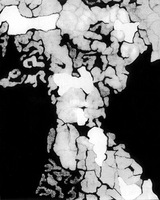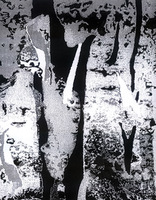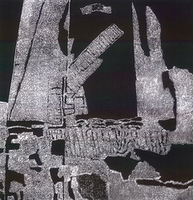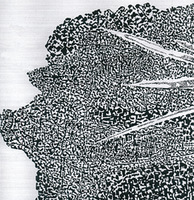The abstract photography of Rimgaudas and Dangirutė Maleckai 4
In brief: By carefully examining the creative retrospective of Rimgaudas and Dangirutė Maleckai at the Kaunas M. and K. Petrauskai Lithuanian Music Museum I oddly meet the history of the 20th century visual art. In their photographs I see documentary and its bold, experimental fragmentation; I see images of reality that turned into abstraction and even double frames, distorting reality.
In fact, I have to state that I am mostly drawn to the double frames. They remind me of photography's attempts of the late 19th century and early 20th century to get rid of static art epithets. It seems that the picture aims to express movement. Thus creating a double frame authors seem to look back at the attempts of the early photography that aimed to not only record and analyze images frame by frame or understand how the movement is born after filming but to also to think of every frame as invisible particle of being, as an element, as a reactive atom splitting and connecting into a systematic whole.
|
|
|
|
After carefully peering into Maleckai photographics I notice that the remains of reality are not only signifying death but at the same time are thrusting into life. Over time, looking at the works, remnants begin to mark the once alive. They give me the opportunity to identify the contours of objects and characters of people. This de(con)structive gesture of photographics can also be commented by citing relatively intimate and especially personal insights of French philosopher Roland Barthes, who had analyzed the phenomenon of photography, "Photographer is searching by looking through technical distortions: double prints, anamorphoses, intentional exploitations of certain defects (separated frames, blurriness, deceptive perspectives). Great photographers played with these amazing tools."
|
|
|
|
When I look at the creative whole of Maleckiai works or at one of the works, everything seems quite clear and stable. However, driven by the investigator's curiosity, I glance at a single detail and in doing so I deconstruct the work frame by frame with my thoughts. In view of the detail and the angle of my sight, it seems that it (the part) deforms and before my eyes takes a completely different structure and signifies with itself no longer a system of photography but of graphics.














